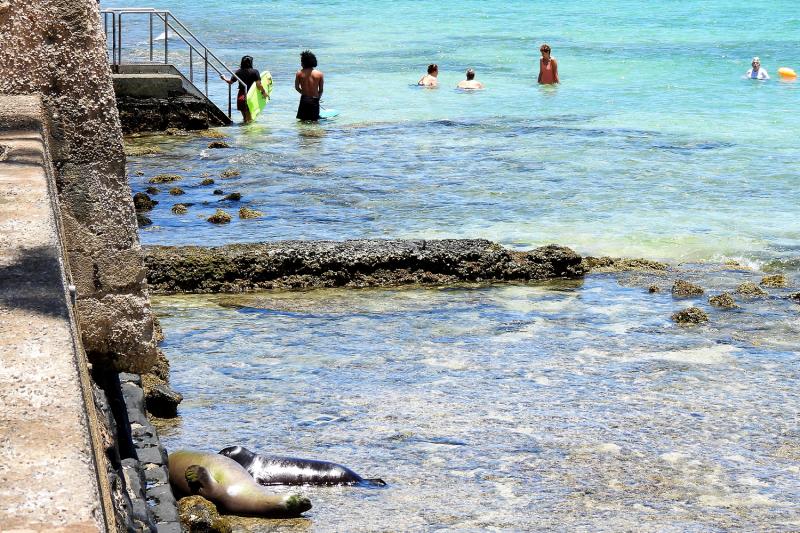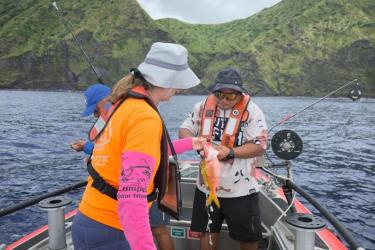NOAA Fisheries and its non-profit partner Hawaiʻi Marine Animal Response (HMAR) will move the monk seal pup P02, also known as Lōliʻi, to a remote shoreline area after he has weaned. This move is both for the pup’s and the public’s safety. And it will allow Lōliʻi to grow up as a wild seal—with less human interaction—in the company of other wild monk seals.
The pup’s mother, RK96, also known as Kaiwi, gave birth to Lōliʻi at Kaimana Beach in Waikīkī, Oʻahu on April 26, 2021. As of Wednesday morning, June 9, 2021, it appears that Kaiwi has weaned Lōliʻi. This timing is consistent with her past weanings, as well as decades of seal research. After weaning, Kaiwi will restore her energy reserves and begin a new reproductive cycle, as is natural for monk seals.
Staying Wild And Safe
Once weaned, Lōliʻi will begin exploring the nearshore waters farther away from shore and learn to forage for food on his own. During this learning period, the pup will be extremely “impressionable.” That means he could easily be conditioned to interact with people in the water, even attempting to engage in “play” and other seal social behavior with them.
After an extensive risk assessment, we are concerned that if Lōliʻi is left at his birth site in Waikīkī, seal-human interactions would be quite frequent. This would not only prevent Lōliʻi from successfully surviving as a wild seal, but also lead to public safety issues.
Weaned Pups Needs Their Space
If conditioned to human interaction, Lōliʻi could accidentally injure people he seeks out in the water when he’s older, bigger, and more powerful. Unfortunately, we have seen this happen in the past. As a result, we had to capture the conditioned seal and either send it to a remote location (in the Northwestern Hawaiian Islands) or place it in captivity. We are taking action with Lōliʻi to do all we can to prevent another such unfortunate outcome.
To further prevent interactions with people, we are not announcing when we will be moving Lōliʻi or where his new home will be.
Once relocated, Lōliʻi will likely remain fairly close to his new beach for several weeks to a few months. He will begin to gradually swim farther and farther, building confidence as he learns to navigate the nearshore waters and forage. Eventually, Lōliʻi will establish his own “range.” This range is quite small for some seals and quite large—spanning multiple islands—for others.
For the first few months at his new beach, NOAA, HMAR, and other partners will closely monitor Lōliʻi. If possible, we may place a satellite tracker on him.






